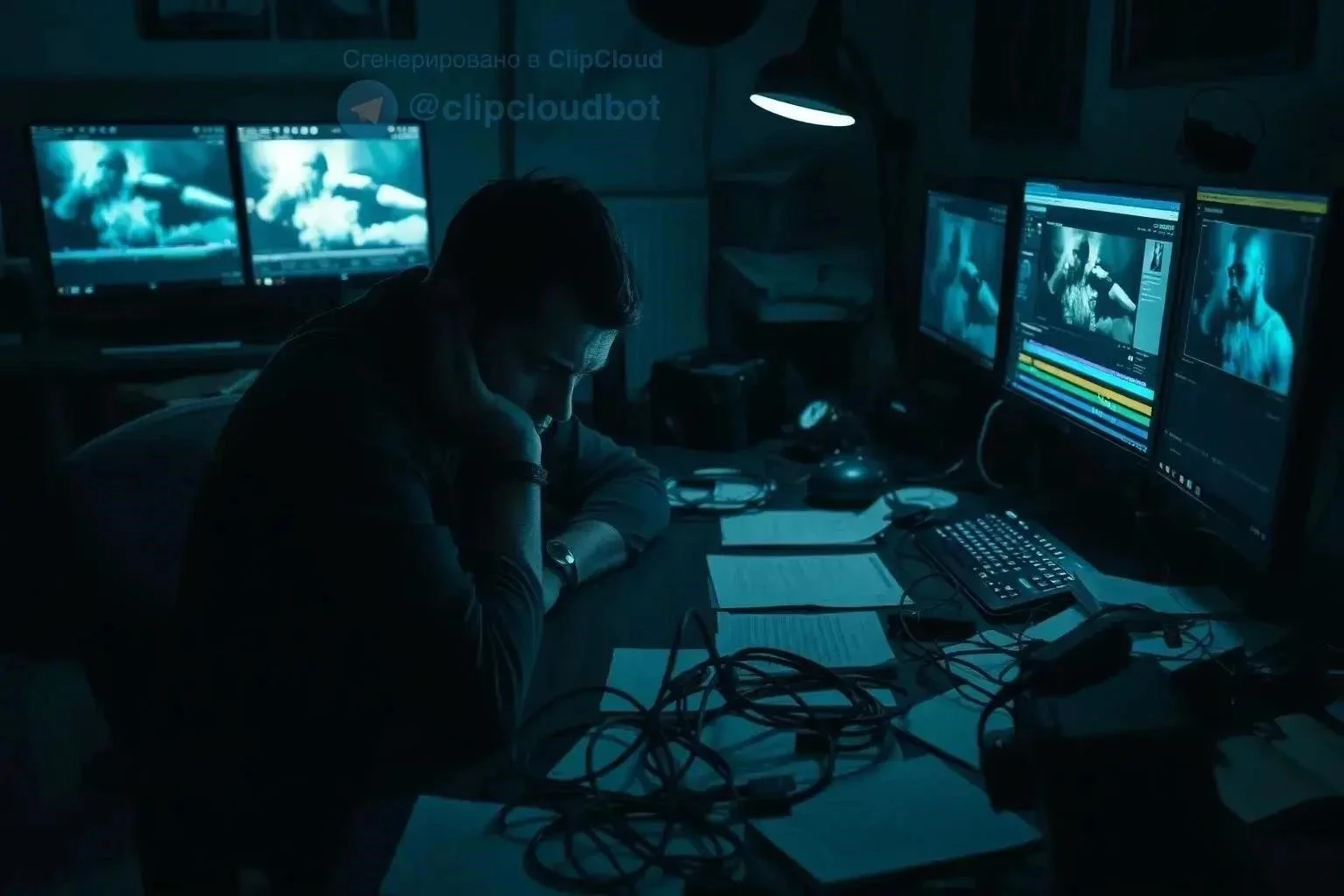Creating compelling video content is essential in today’s digital landscape for engaging audiences, promoting brands, and sharing valuable information. However, the path to creating high-quality videos is often riddled with pitfalls that can detract from the overall impact. Many budding video creators fall victim to easily avoidable errors, resulting in videos that fail to resonate with viewers or achieve their intended goals. This article will explore six common video creation mistakes and provide practical strategies to avoid them, ensuring your videos stand out from the crowd and achieve their desired impact. Let’s dive into the mistakes and learn how to create videos that truly shine!
1. Poor Planning: The Foundation for Video Creation Success
Failing to plan adequately is a critical mistake that can undermine the entire video creation process. Without a clear vision and roadmap, videos often lack focus, coherence, and ultimately, effectiveness.
How to Avoid Poor Planning:
- Define Your Objective: What do you want to achieve with this video? (e.g., increase brand awareness, drive sales, educate viewers).
- Identify Your Target Audience: Who are you trying to reach? Understanding their demographics, interests, and needs is crucial.
- Create a Detailed Script or Storyboard: Outline the key message, visual elements, and overall flow of your video.
- Consider Your Budget and Resources: Realistically assess your financial limitations and available equipment/personnel.
2. Audio Issues: The Silent Killer of Video Engagement
Even visually appealing videos can be ruined by poor audio quality. Buzzing, echoing, or muffled sound can quickly deter viewers and make it difficult to understand the content.
How to Avoid Audio Issues:
- Invest in a Good Microphone: An external microphone significantly improves audio clarity compared to built-in camera microphones.
- Record in a Quiet Environment: Minimize background noise and distractions during recording.
- Monitor Audio Levels: Ensure the audio levels are consistent and avoid peaking (audio distortion).
- Use Audio Editing Software: Clean up unwanted noise, adjust levels, and enhance overall audio quality during post-production.
3. Neglecting Visual Quality: Creating Engaging Visuals
While audio is important, visuals are what initially grab attention. Poor lighting, shaky footage, and distracting backgrounds can detract from the message and make the video look unprofessional.
How to Avoid Neglecting Visual Quality:
- Ensure Proper Lighting: Use adequate lighting to illuminate the subject and create a visually appealing scene. Natural light is often best, but artificial lighting can be effective when used correctly.
- Stabilize Your Footage: Use a tripod or stabilizer to prevent shaky footage, especially when shooting handheld.
- Choose a Clean Background: Avoid distracting backgrounds that can divert attention from the subject.
- Pay Attention to Composition: Use the rule of thirds and other composition techniques to create visually balanced and engaging shots.
4. Lack of Editing: Polishing Your Video to Perfection
Editing is where raw footage transforms into a polished and engaging video. Neglecting editing can result in a rambling, unfocused, and ultimately ineffective video.
How to Avoid Lack of Editing:
- Cut Out Unnecessary Footage: Remove pauses, mistakes, and irrelevant sections to keep the video concise and engaging.
- Add Transitions and Effects: Use transitions and effects sparingly to enhance the flow and visual appeal of the video.
- Incorporate Text and Graphics: Use text and graphics to highlight key information, add visual interest, and reinforce your message.
- Music and Sound Effects: Use music and sound effects to enhance the mood and create a more immersive experience.
5. Ignoring Your Audience: Tailoring Content for Viewers
Creating videos without considering your target audience is a recipe for failure. Content that doesn’t resonate with viewers will likely be ignored.
How to Avoid Ignoring Your Audience:
- Research Your Audience’s Interests: What topics are they interested in? What problems are they trying to solve?
- Tailor Your Tone and Style: Use a tone and style that is appropriate for your target audience.
- Optimize for Different Platforms: Consider the platform where your video will be viewed (e.g., YouTube, Instagram, Facebook) and optimize accordingly.
- Encourage Engagement: Ask questions, invite comments, and encourage viewers to share your video.
Factoid: Understanding your audience is paramount. A video that resonates with one demographic may completely miss the mark with another.
6. Forgetting a Call to Action: Guiding Viewers to the Next Step
A video without a clear call to action is like a story without an ending. Viewers may be entertained, but they won’t know what you want them to do next.
How to Avoid Forgetting a Call to Action:
- Clearly State Your Desired Action: What do you want viewers to do after watching your video? (e.g., visit your website, subscribe to your channel, purchase a product).
- Make the Call to Action Prominent: Visually highlight the call to action using text, graphics, or animation.
- Repeat the Call to Action: Reinforce the call to action throughout the video, especially at the end.
- Make it Easy to Take Action: Provide a clear and easy way for viewers to take the desired action (e.g., a link in the description, a button on the screen).
FAQ: Common Questions About Video Creation
Q: What is the best video editing software for beginners?
A: There are several user-friendly video editing software options for beginners, including iMovie (for Mac), Filmora, and Movavi Video Editor Plus.
Q: How long should my video be?
A: The ideal video length depends on the platform and the content. Generally, shorter videos (under 2 minutes) perform better on social media, while longer videos (5-10 minutes) may be suitable for YouTube.
Q: What equipment do I need to create videos?
A: The basic equipment you’ll need includes a camera (smartphone cameras are often sufficient), a microphone, and a tripod. As you progress, you may want to invest in lighting equipment and more advanced editing software.
Q: How do I improve my on-camera presence?
A: Practice speaking clearly and confidently. Maintain eye contact with the camera. Be yourself and let your personality shine through;
Q: How important is SEO for video content?
A: SEO (Search Engine Optimization) is crucial for video discoverability. Optimizing your video title, description, and tags with relevant keywords can significantly improve its ranking in search results.
Avoiding these common video creation mistakes is crucial for producing engaging, effective, and professional-looking content. By planning carefully, focusing on audio and visual quality, editing meticulously, understanding your audience, and including a clear call to action, you can create videos that achieve your desired goals, whether it’s boosting brand awareness, driving sales, or simply sharing your passion with the world. Remember that video creation is a continuous learning process. Don’t be afraid to experiment, learn from your mistakes, and constantly strive to improve your skills. With dedication and attention to detail, you can unlock the power of video to connect with your audience and achieve your objectives.
Finally, remember that consistent effort trumps perfection. Don’t let the fear of making mistakes paralyze you. Start creating, learn as you go, and refine your process over time. The more videos you create, the better you’ll become at avoiding these common pitfalls and producing high-quality content that resonates with your audience.
Creating engaging video content can feel daunting, but it doesn’t have to be. Many aspiring video creators stumble over similar hurdles, hindering their potential. By proactively addressing these common mistakes, you can significantly improve the quality and impact of your videos. From overlooking the importance of pre-production planning to neglecting the nuances of audio and visual quality, we’ll delve into the key areas where creators often falter. Understanding these pitfalls and implementing effective strategies to avoid them will set you on the path to creating compelling videos that captivate your audience and achieve your desired results.
Factoid: Did you know that videos with high-quality audio are perceived as more professional, even if the video quality is slightly lower?
1. Lack of Planning: Laying the Foundation for Video Success
Jumping into video creation without a solid plan is like embarking on a road trip without a map. You might eventually reach your destination, but the journey will likely be inefficient, frustrating, and potentially lead you astray.
How to Avoid Lack of Planning:
- Define Your Objectives: What do you want to achieve with your video? (e.g., increase brand awareness, generate leads, educate viewers).
- Identify Your Target Audience: Who are you trying to reach with your video? Understanding their demographics, interests, and needs is crucial.
- Develop a Script or Outline: A script or outline will help you stay focused, organized, and ensure you cover all the key points.
- Create a Storyboard: A storyboard visually maps out each scene in your video, helping you visualize the flow and composition.
2. Poor Audio Quality: Ensuring Crystal-Clear Sound
Bad audio can instantly ruin a video, regardless of how visually appealing it may be. Viewers are far more forgiving of slightly subpar video quality than they are of distracting background noise, muffled voices, or inconsistent audio levels.
How to Avoid Poor Audio Quality:
- Use an External Microphone: The built-in microphone on your camera or smartphone is often inadequate. Invest in an external microphone for better sound quality.
- Record in a Quiet Environment: Minimize background noise by recording in a quiet room or using soundproofing materials.
- Monitor Your Audio Levels: Ensure that your audio levels are consistent and avoid clipping (distortion caused by recording levels that are too high).
- Edit Your Audio: Use audio editing software to remove background noise, equalize levels, and enhance clarity.
While audio is important, visuals are what initially grab attention. Poor lighting, shaky footage, and distracting backgrounds can detract from the message and make the video look unprofessional.
- Ensure Proper Lighting: Use adequate lighting to illuminate the subject and create a visually appealing scene. Natural light is often best, but artificial lighting can be effective when used correctly.
- Stabilize Your Footage: Use a tripod or stabilizer to prevent shaky footage, especially when shooting handheld.
- Choose a Clean Background: Avoid distracting backgrounds that can divert attention from the subject.
- Pay Attention to Composition: Use the rule of thirds and other composition techniques to create visually balanced and engaging shots.
Editing is where raw footage transforms into a polished and engaging video. Neglecting editing can result in a rambling, unfocused, and ultimately ineffective video.
- Cut Out Unnecessary Footage: Remove pauses, mistakes, and irrelevant sections to keep the video concise and engaging.
- Add Transitions and Effects: Use transitions and effects sparingly to enhance the flow and visual appeal of the video.
- Incorporate Text and Graphics: Use text and graphics to highlight key information, add visual interest, and reinforce your message.
- Music and Sound Effects: Use music and sound effects to enhance the mood and create a more immersive experience.
Creating videos without considering your target audience is a recipe for failure. Content that doesn’t resonate with viewers will likely be ignored.
- Research Your Audience’s Interests: What topics are they interested in? What problems are they trying to solve?
- Tailor Your Tone and Style: Use a tone and style that is appropriate for your target audience.
- Optimize for Different Platforms: Consider the platform where your video will be viewed (e.g., YouTube, Instagram, Facebook) and optimize accordingly.
- Encourage Engagement: Ask questions, invite comments, and encourage viewers to share your video.
Factoid: Understanding your audience is paramount. A video that resonates with one demographic may completely miss the mark with another.
A video without a clear call to action is like a story without an ending. Viewers may be entertained, but they won’t know what you want them to do next.
- Clearly State Your Desired Action: What do you want viewers to do after watching your video? (e.g., visit your website, subscribe to your channel, purchase a product).
- Make the Call to Action Prominent: Visually highlight the call to action using text, graphics, or animation.
- Repeat the Call to Action: Reinforce the call to action throughout the video, especially at the end.
- Make it Easy to Take Action: Provide a clear and easy way for viewers to take the desired action (e.g., a link in the description, a button on the screen).
A: There are several user-friendly video editing software options for beginners, including iMovie (for Mac), Filmora, and Movavi Video Editor Plus.
A: The ideal video length depends on the platform and the content. Generally, shorter videos (under 2 minutes) perform better on social media, while longer videos (5-10 minutes) may be suitable for YouTube.
A: The basic equipment you’ll need includes a camera (smartphone cameras are often sufficient), a microphone, and a tripod. As you progress, you may want to invest in lighting equipment and more advanced editing software.
A: Practice speaking clearly and confidently. Maintain eye contact with the camera. Be yourself and let your personality shine through.
A: SEO (Search Engine Optimization) is crucial for video discoverability. Optimizing your video title, description, and tags with relevant keywords can significantly improve its ranking in search results.
Avoiding these common video creation mistakes is crucial for producing engaging, effective, and professional-looking content. By planning carefully, focusing on audio and visual quality, editing meticulously, understanding your audience, and including a clear call to action, you can create videos that achieve your desired goals, whether it’s boosting brand awareness, driving sales, or simply sharing your passion with the world. Remember that video creation is a continuous learning process. Don’t be afraid to experiment, learn from your mistakes, and constantly strive to improve your skills. With dedication and attention to detail, you can unlock the power of video to connect with your audience and achieve your objectives.
Finally, remember that consistent effort trumps perfection. Don’t let the fear of making mistakes paralyze you. Start creating, learn as you go, and refine your process over time. The more videos you create, the better you’ll become at avoiding these common pitfalls and producing high-quality content that resonates with your audience.
7. Neglecting Promotion: Getting Your Video Seen
Creating a fantastic video is only half the battle. If no one sees it, all your hard work will be for naught. Effective promotion is key to maximizing your video’s reach and impact.
How to Avoid Neglecting Promotion:
- Optimize for Search Engines: Use relevant keywords in your title, description, and tags to improve your video’s visibility in search results.
- Share on Social Media: Promote your video on all relevant social media platforms. Tailor your message to each platform’s audience.
- Embed on Your Website: Embed your video on your website or blog to increase engagement and drive traffic.
- Email Marketing: Send an email to your subscribers announcing your new video.
- Collaborate with Others: Partner with other creators or influencers to cross-promote your videos.
- Paid Advertising: Consider using paid advertising to reach a wider audience.
8. Ignoring Analytics: Measuring Your Success and Learning
Without tracking and analyzing your video’s performance, you’re flying blind. Analytics provide valuable insights into what’s working and what’s not, allowing you to refine your strategy and improve future videos.
How to Avoid Ignoring Analytics:
- Track Key Metrics: Monitor metrics such as views, watch time, audience retention, engagement (likes, comments, shares), and traffic sources.
- Use Analytics Tools: Utilize analytics tools like YouTube Analytics, Google Analytics, and social media analytics dashboards.
- Analyze the Data: Identify trends and patterns in your data. What types of videos are performing best? Where are viewers dropping off?
- Adjust Your Strategy: Use your insights to optimize your future videos. Experiment with different formats, topics, and promotional strategies.
9. Not Asking for Feedback: Missing Out on Valuable Perspectives
It’s easy to become too close to your own work and miss potential flaws or areas for improvement. Seeking feedback from others can provide fresh perspectives and help you identify blind spots.
How to Avoid Not Asking for Feedback:
- Share Your Video with Trusted Friends or Colleagues: Ask for honest and constructive criticism.
- Join Online Communities: Participate in online forums or groups related to video creation. Share your videos and ask for feedback.
- Use Online Tools: Utilize online tools like user testing platforms to gather feedback from your target audience.
- Actively Solicit Comments: Encourage viewers to leave comments on your videos and respond to their feedback.
10; Losing Patience: The Importance of Perseverance
Video creation is a long-term game. Don’t get discouraged if your first few videos don’t go viral. Success requires patience, persistence, and a willingness to learn and improve over time.
How to Avoid Losing Patience:
- Set Realistic Goals: Don’t expect overnight success. Set achievable goals and celebrate your progress along the way.
- Focus on Improvement: Continuously strive to improve your skills and the quality of your videos.
- Stay Inspired: Watch videos from other creators and find inspiration in their work.
- Network with Others: Connect with other video creators and share your experiences.
- Enjoy the Process: Remember to have fun and enjoy the creative process.
Factoid: It often takes multiple videos to build momentum and attract a loyal audience. Don’t give up after just a few attempts!
By addressing these ten common mistakes, you’ll be well on your way to creating compelling and effective video content. Remember that video creation is a journey of continuous learning and improvement. Embrace the challenges, learn from your mistakes, and never stop striving to create better videos that resonate with your audience.
Ultimately, the best way to avoid these mistakes is to be mindful, proactive, and committed to producing high-quality content. With careful planning, attention to detail, and a willingness to learn, you can unlock the power of video to achieve your goals and connect with the world.


